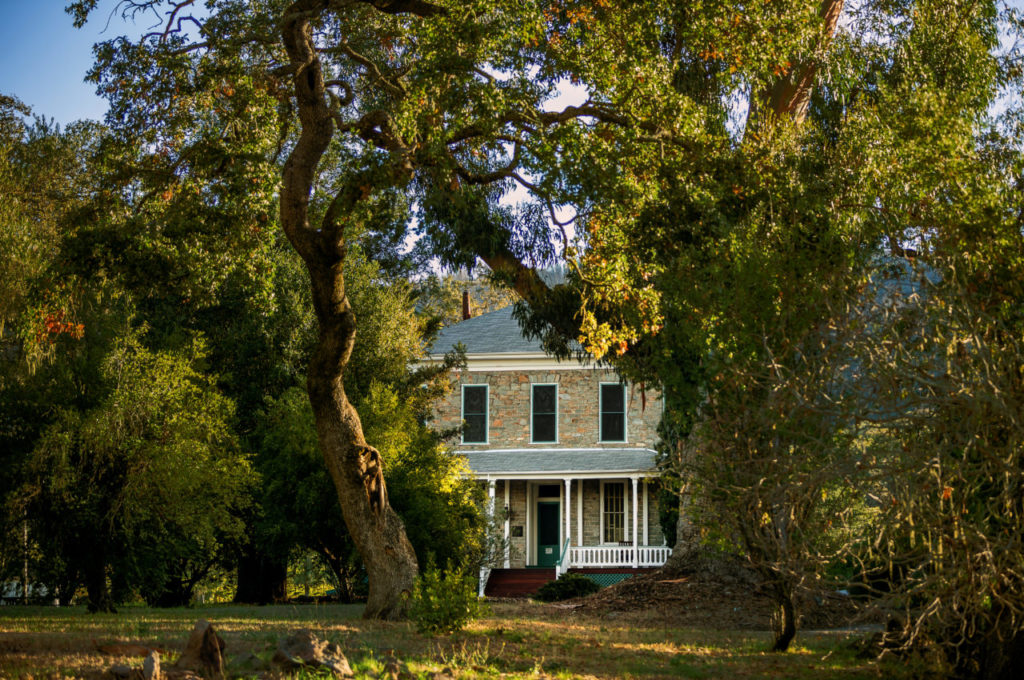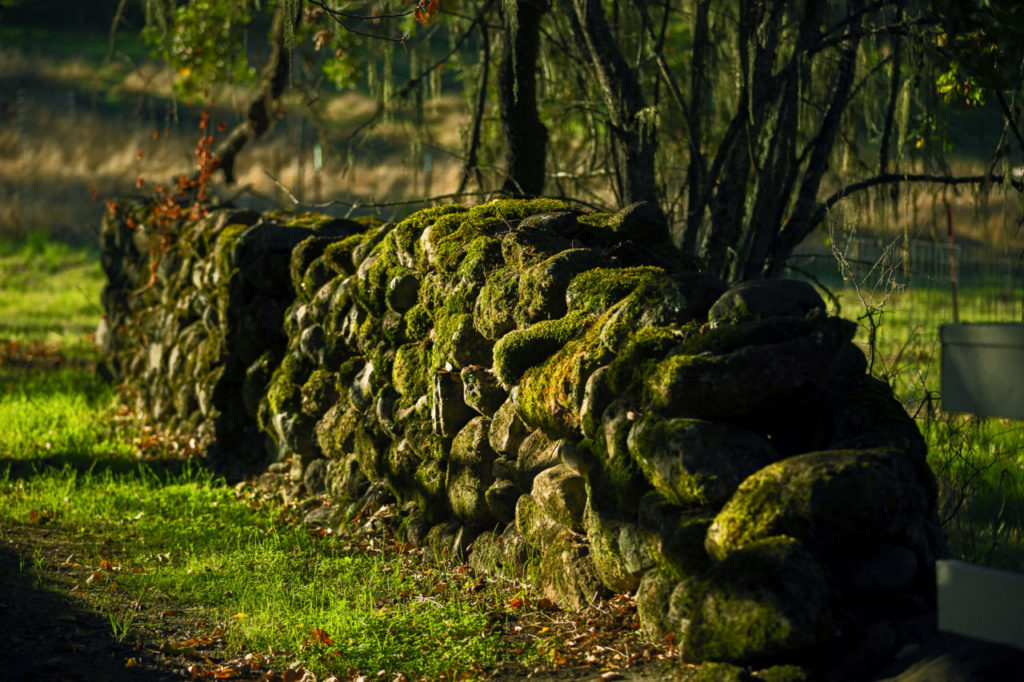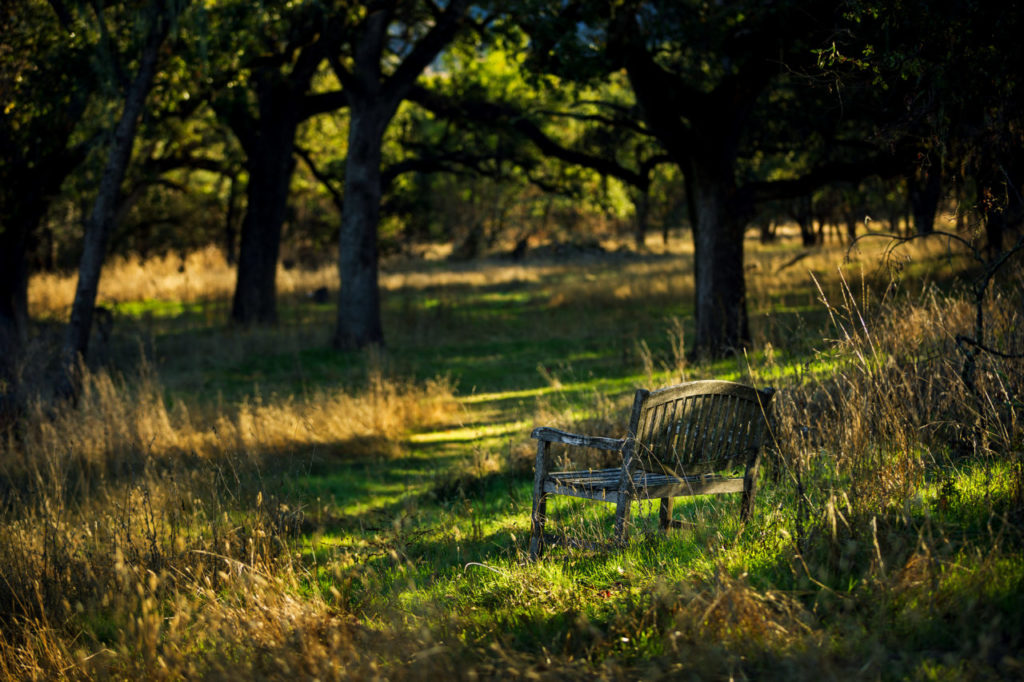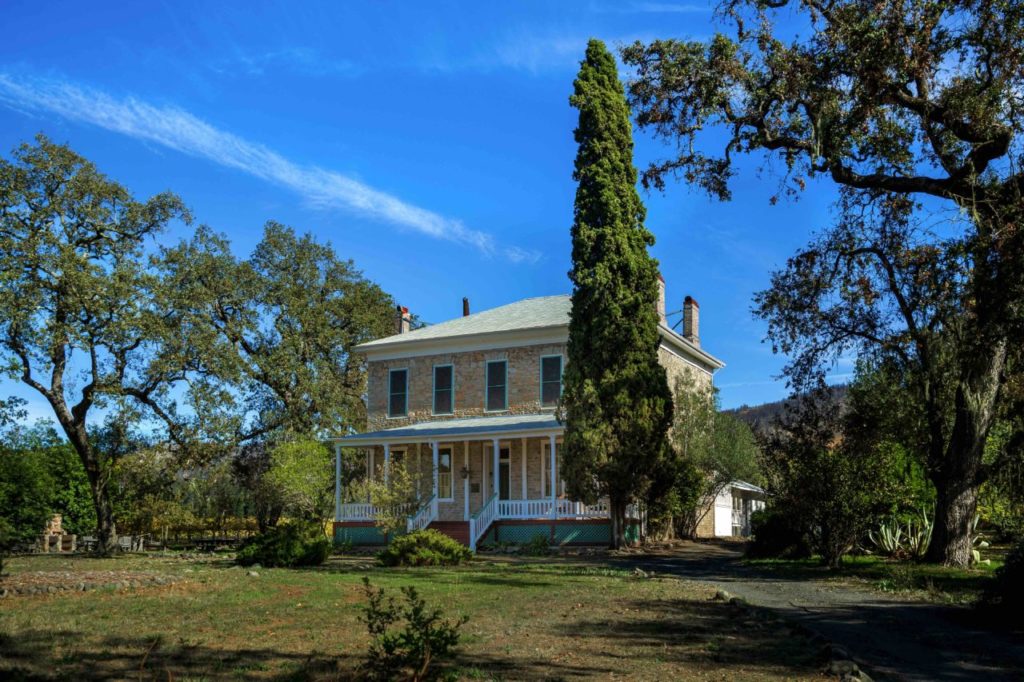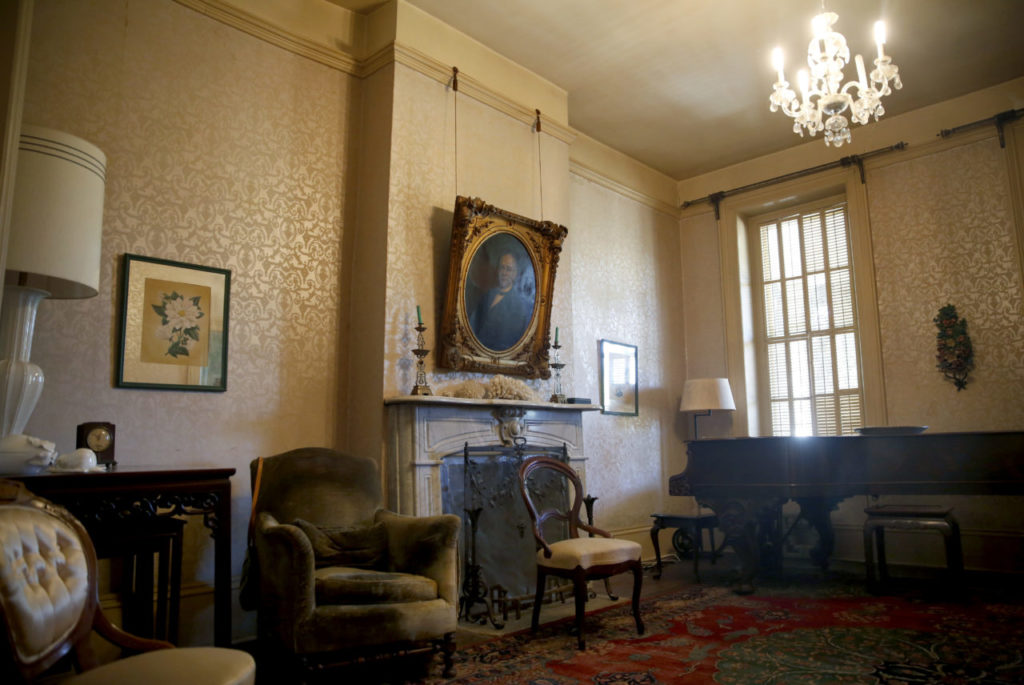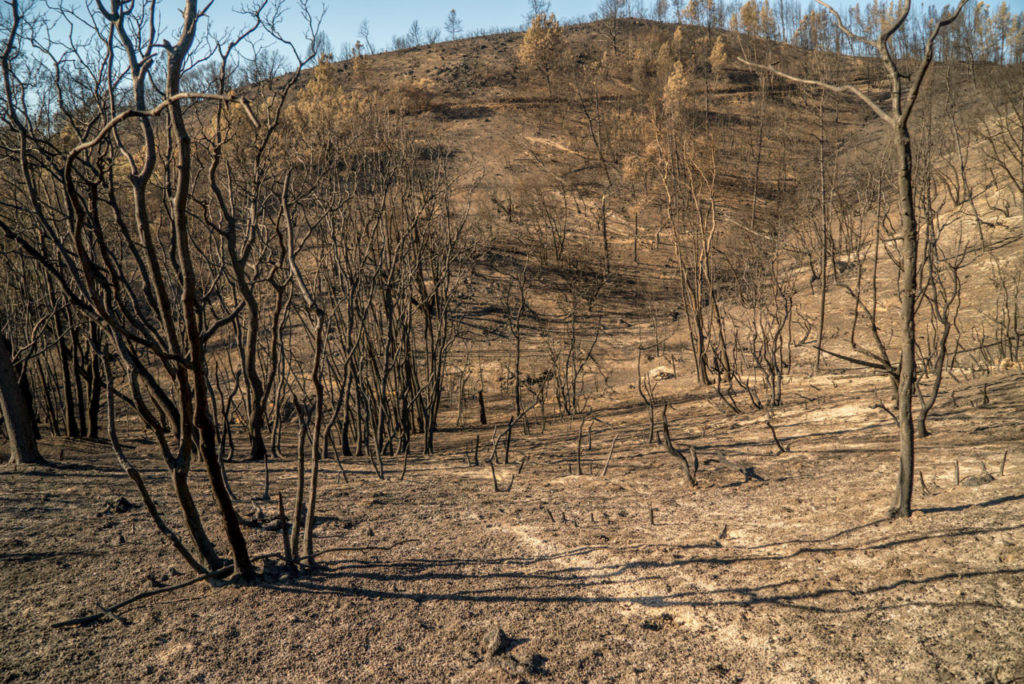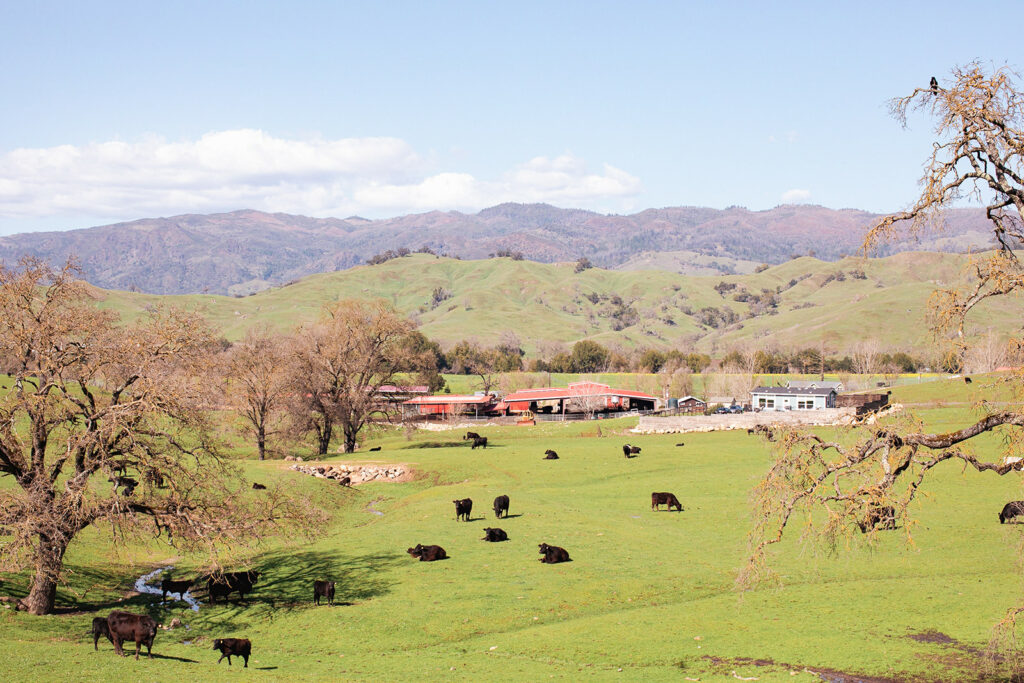Glen Oaks Ranch may seem a quiet place in winter, but closer inspection might reveal two wild turkeys wrestling for dominance in a meadow by Stuart Creek, or an owl nesting in the centuries-old Eucalyptus trees in front of one of the oldest houses in Sonoma Valley. Preservation, both of the historic house and of the wildlife habitat on the ranch’s 234-acre property, is paramount here. And 2019 finds the Sonoma Land Trust busy managing the many projects begun in recent years, both inside and out.
The stalwart 1860s homestead, tucked away off Arnold Drive in Glen Ellen, was the creation of Colonel Charles Stuart, who had arrived in California from Pennsylvania via a difficult crossing on a mule pack train. After he made his money in real estate, Stuart began planting vines on his “Glen Ellen Vineyard,” named for his wife, Ellen. With the aid of Chinese labor, Stuart built the Glen Oaks house from a local volcanic white stone called rhyolite. Although the house has survived multiple earthquakes and wildfires in the years since its construction, other structures on the property — including a barn that had recently undergone an extensive renovation — were destroyed in the 2017 Nuns fire.
The 3,150-square-foot house went through a series of private owners after Stuart, notably advertising wizard Roswell Cochran, who bought it in 1952 and raised cattle and cultivated fruit trees there with his wife, Camille. When their daughter, Joan Cochran, inherited the Glen Oaks property in 1988, she became its true guardian and advocate. Glen Oaks earned a spot on the National Register of Historic Places in 1994, and upon Joan’s death in 2002, it was bequeathed to the Sonoma Land Trust with her instructions that the land should remain “forever wild.” The house itself remains a wonderful mashup of various eras and inhabitants, with much of the original furniture still under its eaves, first editions sharing bookshelves with Readers Digest, midcentury modern rubbing elbows with Victorian mahogany.
Reta Lockert, donor relations director at the Land Trust, is full of lively tales about the house. “I had the fun of knowing the eccentric Joan Cochran from the 1990s until she died,” says Lockert. “She always instructed first-time guests to ‘Say hello to the General’ when they entered the room.” The general in question is of course General Mariano Vallejo, who owned the then-3,100-acre property during the land grant days of 1843. Vallejo soon traded the land to a German musician for five years’ worth of piano lessons for his children.
Cochran’s reverence for the general is also evident in a sign she placed in a chair, both of which remain in the house today, reading Reserved for General Vallejo.
Her desire to honor Vallejo’s legacy was matched by her passion for preserving the property’s natural beauty and its role as a vital habitat. A crucial wildlife corridor, 5 miles long and less than a mile wide at its narrowest point, traverses the ranch, allowing animals to move safely between Sonoma Mountain and the Mayacamas range.
“Riparian zones are critical for animals because they need cover to feel safe to move freely,” says Tony Nelson, Sonoma Valley program manager for the Land Trust. “We’ve been working to widen this habitat by planting native trees, buckeye, elderberry, and native rose. Glen Oaks Ranch is at a strategic point of the corridor, and this has changed the way we look at properties.”
The Land Trust’s efforts have been rewarded with an increase of commuting wildlife: cameras have recorded mountain lions, bobcats, coyote, deer, gray fox, skunk, and opossum making their way between the two mountain ranges. Nelson has also been involved in an ongoing project to reestablish Stuart Creek’s historic steelhead trout run, over 2 miles of spawning and rearing ground for the beleaguered fish. Culverts, dams, and bridges have all been modified recently to ease the transit from ocean to creek. Says Nelson, “Steelhead come with the winter rains, when the flow to the ocean is highest. I’ve seen quite a few young steelheads, but we’ll know we’ve succeeded when we see more of the mature fish.”
In addition to his work for the trout and other wildlife, Nelson is brainstorming with other conservation organizations about ways to moderate future wildfire conditions on a critical 18,000-acre swath of land, because “fire doesn’t recognize one person’s property line, and neither does wildlife.”
Glen Oaks Ranch exemplifies a place where the rhythms of the past and visions for the future are nurtured equally. The sun sets early in the winter, and the patio of the old stone house remains the best spot to see it. Just don’t block General Vallejo’s view.










